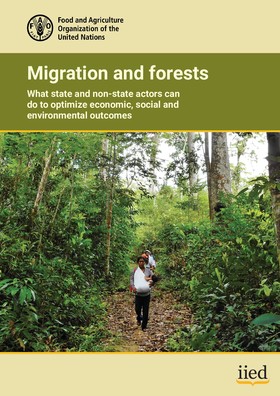Migration and forests: what state and non-state actors can do to optimize economic, social and environmental outcomes

As climate change intensifies, the push and pull factors behind migration into and out of forests are exacerbated. But what are the patterns and how can the impacts be optimised?
This brief documents the push and pull factors that can be found in changing population dynamics, politics, economic growth or decline and social or environmental change. It describes why migration outcomes in forest landscapes matter, what drives them, how they can be shaped, and who can do what to optimise those outcomes.
It recommends that government decision-makers should: (i) Update knowledge on migration and forests especially in relation to internal migration, which is often poorly documented, and around ecologically intact forest areas (ii) Improve tenure security in forest landscapes; (iii) Define ‘no-go’ zones of high conservation value or indigenous territories; (iv) Treat migration (except in no-go zones) as an opportunity to enhance sustainable forest landscapes with specific plans for those who remain, move out of, or move into local forest communities; (v) Facilitate transport, telecommunications and remittance finance possibilities except in no-go zones; (vi) Enhance inclusive migration-aware extension and support services; and finally (vii) Make empowerment of local member-based organisations key to beneficial migration outcomes – for those remaining to sustainably manage the forest, or those leaving and sending back remittances, and for those moving into forests to ensure they align with sustainable forest management objectives.
Cite this publication
Available at https://www.iied.org/22216g